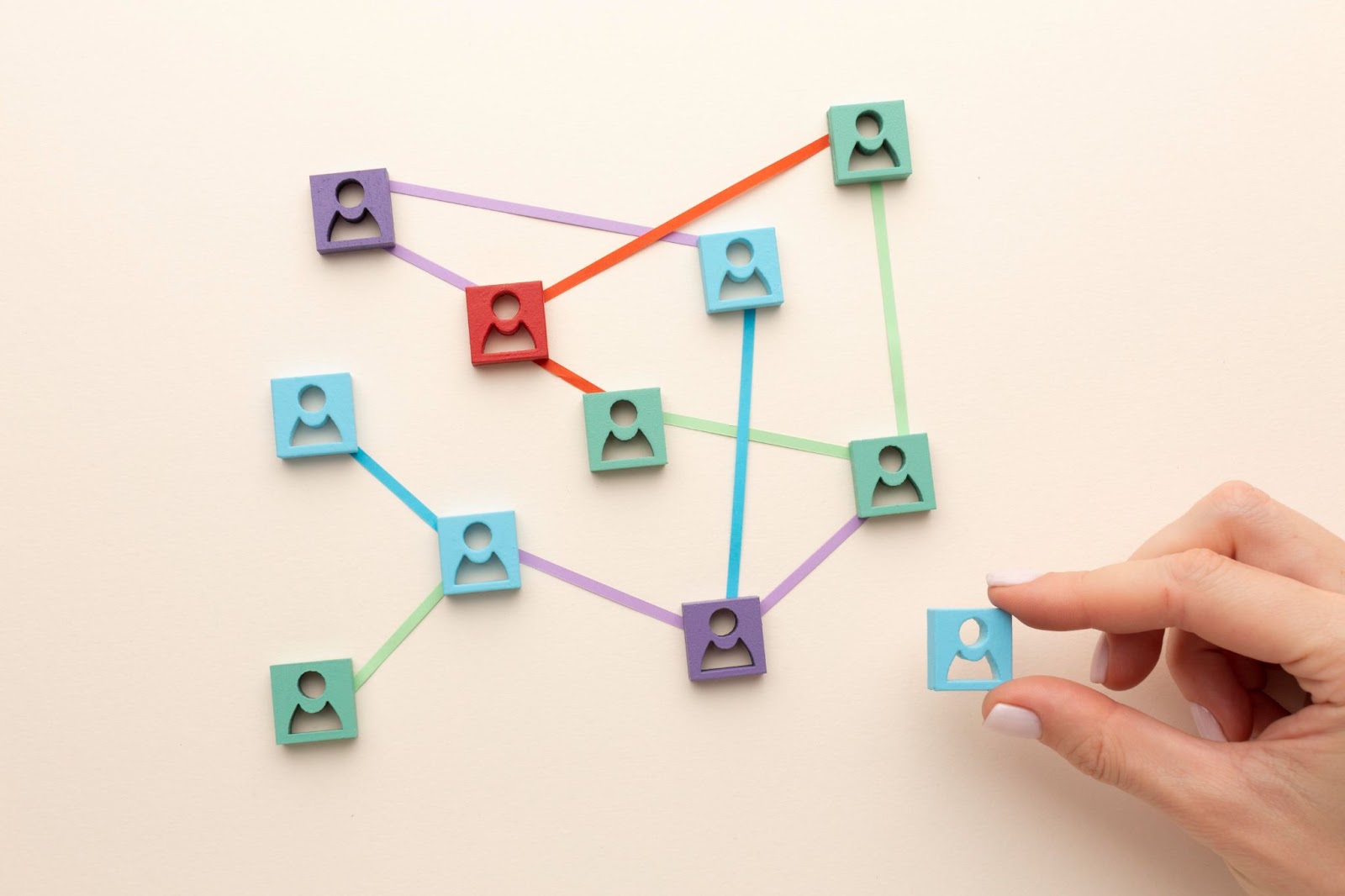How many deals, hires, or partnerships are sitting in your extended network?
Roughly 85% of jobs are landed through networking. The same principle applies to sales, hiring, and fundraising. Your next job opportunity likely starts with someone you already know.
Business relationship mapping helps make those connections visible. It shows who’s in your orbit, how you’re connected, and where to take action.
In this guide, we’ll break down five relationship mapping software tools that help you do that.
What Is Business Relationship Mapping?
Business relationship mapping gives you a clear view of who’s in your network and how they’re connected. It’s a visual way to see where trust already exists so you can move faster toward your next opportunity.
Instead of digging through emails or trying to remember who knows whom, you get a visual representation of the people and paths around you. The goal isn’t to manage contacts. It’s to identify key decision makers through people you already know.
This approach is useful if you're:
- Selling into layered organizations
- Hiring through referrals
- Navigating partnerships or stakeholder management
- Trying to land meetings that matter
When done right, business relationship mapping turns scattered contacts into a usable asset. It helps you uncover hidden paths, remove friction from outreach, and focus on connections that drive outcomes.
How Does Business Relationship Mapping Work?
At its core, relationship mapping is about turning your network into a strategy. You're not just tracking names. You're figuring out how those connections can drive real business outcomes.
The process usually follows these steps:
Collect Data From Existing Relationships
Start by pulling in contacts from your email, calendar, customer relationship management (CRM) system, and meeting history. This gives you a full view of your existing relationships, not just the ones you interact with daily.
Some platforms analyze messages, calls, or shared projects to surface trust signals. This gives you a more accurate sense of relationship strength.
Build a Visual Chart of the Network
Once your data is collected, the platform builds a visual chart. You’ll see nodes for people and lines that show how they connect. Stronger connections appear more prominent.
This view helps you spot gaps, overlaps, and new paths to key decision makers. You can immediately see which connections are worth acting on and which ones need work.
Score and Prioritize Relationships
Good relationship mapping software doesn't stop at visualization. It scores relationships based on frequency, relevance, and shared history.
This lets your sales team or account managers focus on paths with the highest potential. Instead of starting cold, you’re working smarter with real relationship intelligence.
Put Relationship Insights Into Action
Mapping is only useful if you can act on it. The best relationship mapping tools let you request warm introductions, log notes, or move contacts into outreach workflows.
You’re targeting important stakeholders with the right context, which makes outreach feel natural instead of forced.
This is what makes the relationship mapping process so valuable. It turns static contact lists into something you can use to close deals, recruit talent, and grow existing accounts.
Top Tools for Customer Relationship Mapping
Now that you understand how business relationship mapping works, the next step is choosing the right tool for the job.
Below are five tools that help you map, understand, and act on your network.
1. Village—Built to Turn Networks Into Warm Introductions
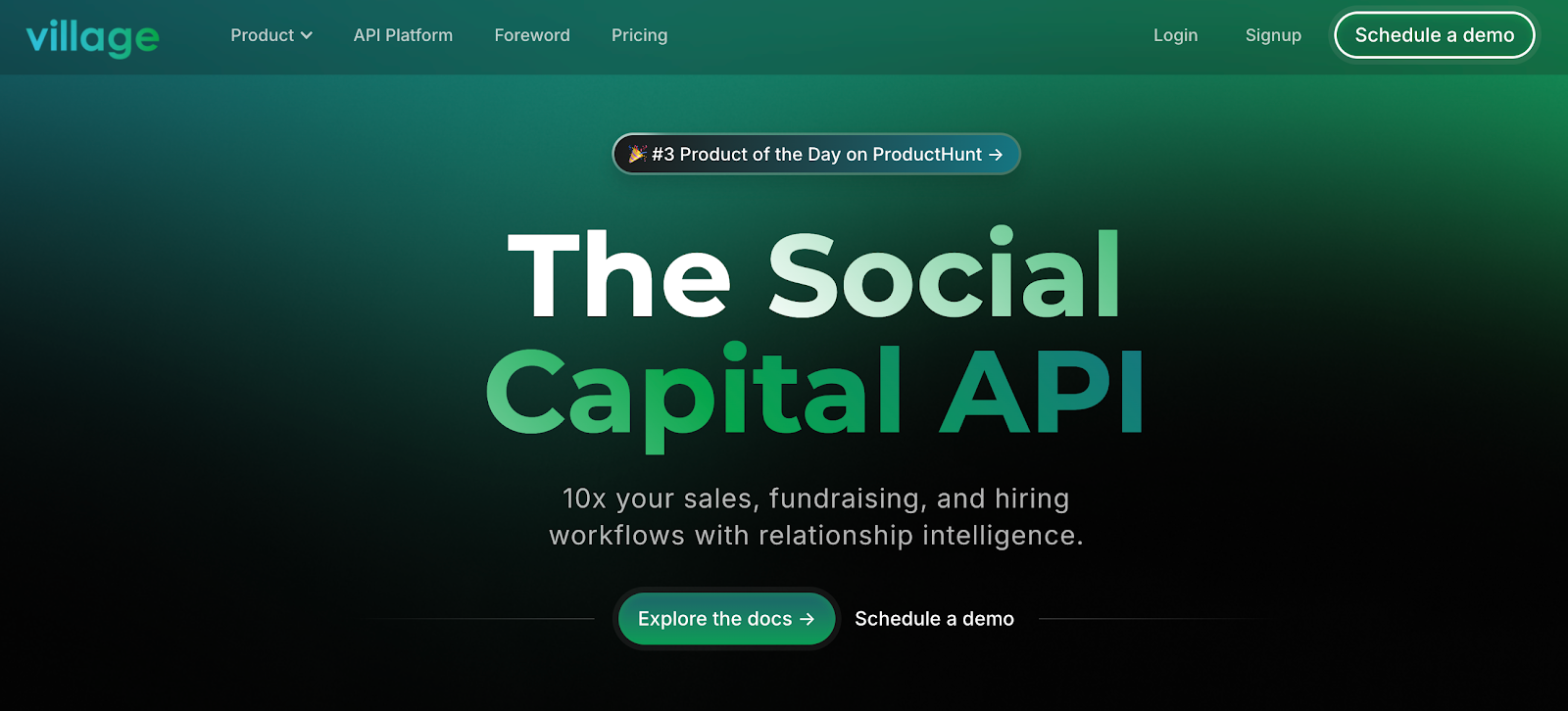
Most networking tools show you who you know. Village goes further. It helps you act on those connections with context, clarity, and confidence.
Village pulls from your contacts, calendar, LinkedIn, and past collaborations to create a dynamic web of first-, second-, and third-degree connections. That means your 2,000 contacts can expand into 100,000+ trusted pathways.
The platform uses AI to score each relationship. It looks at relationship strength, shared experiences, co-investments, and communication history. This level of relationship intelligence gives you real insight into where trust already exists, and who’s most likely to help.
You can explore intro paths, verify shared history, and send warm introductions using double opt-in flows. This isn’t just helpful for sales. It’s a competitive edge for founders, recruiters, and revenue teams working on high-stakes deals.
Key Features
- Visual network graph built from your real-world interactions
- Smart scoring based on interaction quality
- Built-in Kanban views to manage outreach
- CRM sync and Paths Explorer® API for deeper integrations
- Ready-to-use intro templates with tracking
You can use Village to strengthen customer relationship mapping, navigate complex organizations, or expand your access to strategic decision-makers. It works whether you're focused on closing a deal or building a trusted referral pipeline.
The best part? It surfaces valuable insights without you having to guess. You’ll know who to talk to, how you’re connected, and what the next step should be.
Pricing
- Trial: Free
- Essentials: $19/month
- Pro: $39/month
- Premium: $119/month
- API platform: $499/month
Village doesn’t just map relationships. It activates them.
Start Village for free and see how far your network can take you. If you want to learn more about the platform, book a demo now.
2. Creately—Visual Collaboration for Organizational Mapping
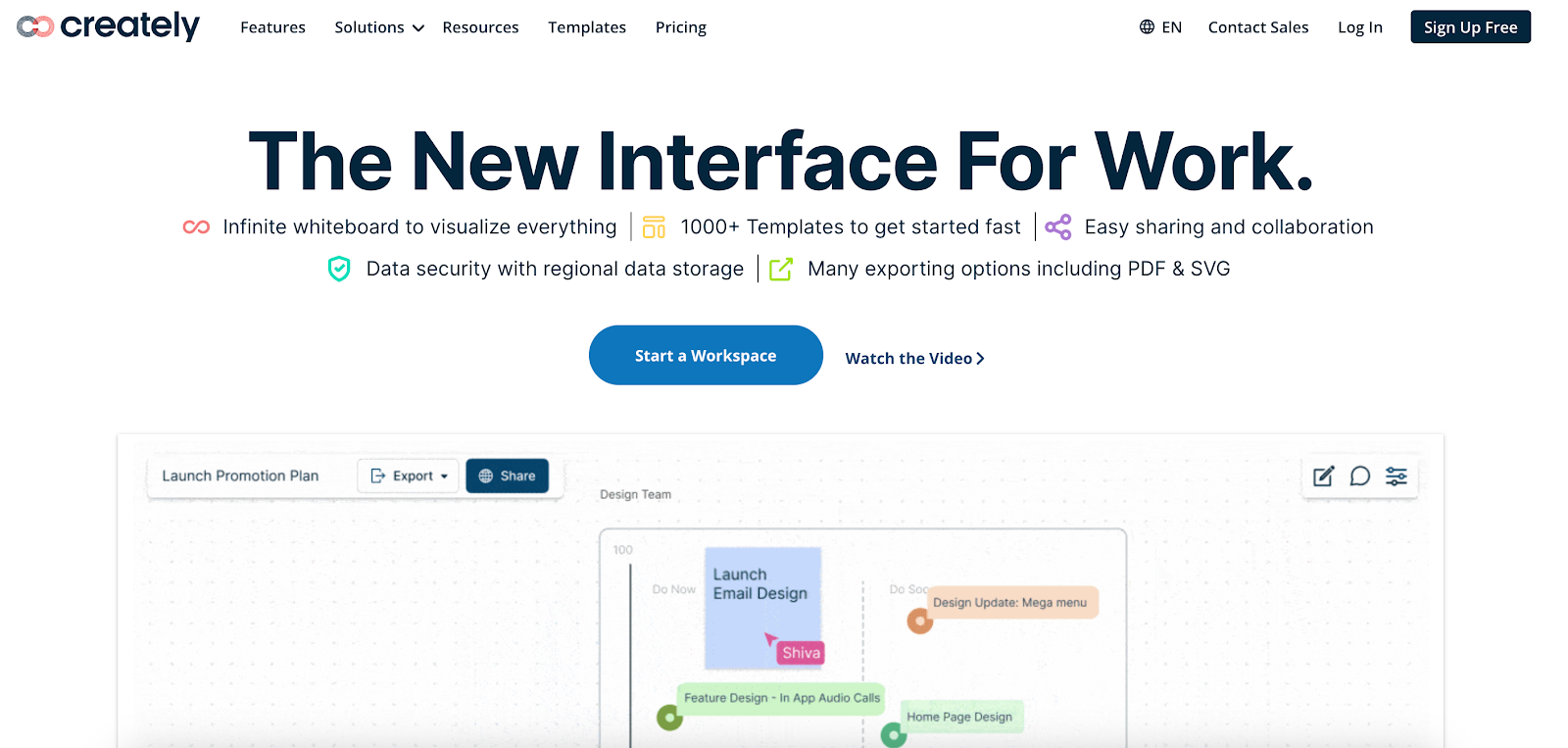
If you need a flexible way to map teams, roles, or processes, Creately gives you the space to do it visually. It’s not built for trust scoring or warm intros, but you can use it to build an organizational chart or map out who’s involved in a project.
Creately functions like a digital whiteboard. You can drop in ideas, link them together, and structure your thoughts around how people, tasks, and outcomes connect. It works well for internal planning.
The platform comes with over 10,000 templates, including org charts, flowcharts, mind maps, and technical diagrams. This makes it useful when you're building a stakeholder relationship map or outlining team structures for project management.
Key Features
- Real-time editing and commenting
- Diagram exports to PDF, PNG, Visio, and PowerPoint
- Google Workspace, Slack, and Trello integrations
- Revision history to track changes and roll back
Pros
Creately is easy to use, visually appealing, and packed with templates that make internal planning fast. It works well for collaborative team sessions and looks polished in presentations.
Cons
It doesn’t support external contact mapping or relationship scoring. Some users report issues with element snapping and layout alignment, which can slow down detailed work.
Pricing
- Personal: $8/month
- Team: $8/month per user
- Business: $149/month
- Enterprise: Custom pricing
3. Deel—Global Org Visibility for Distributed Teams
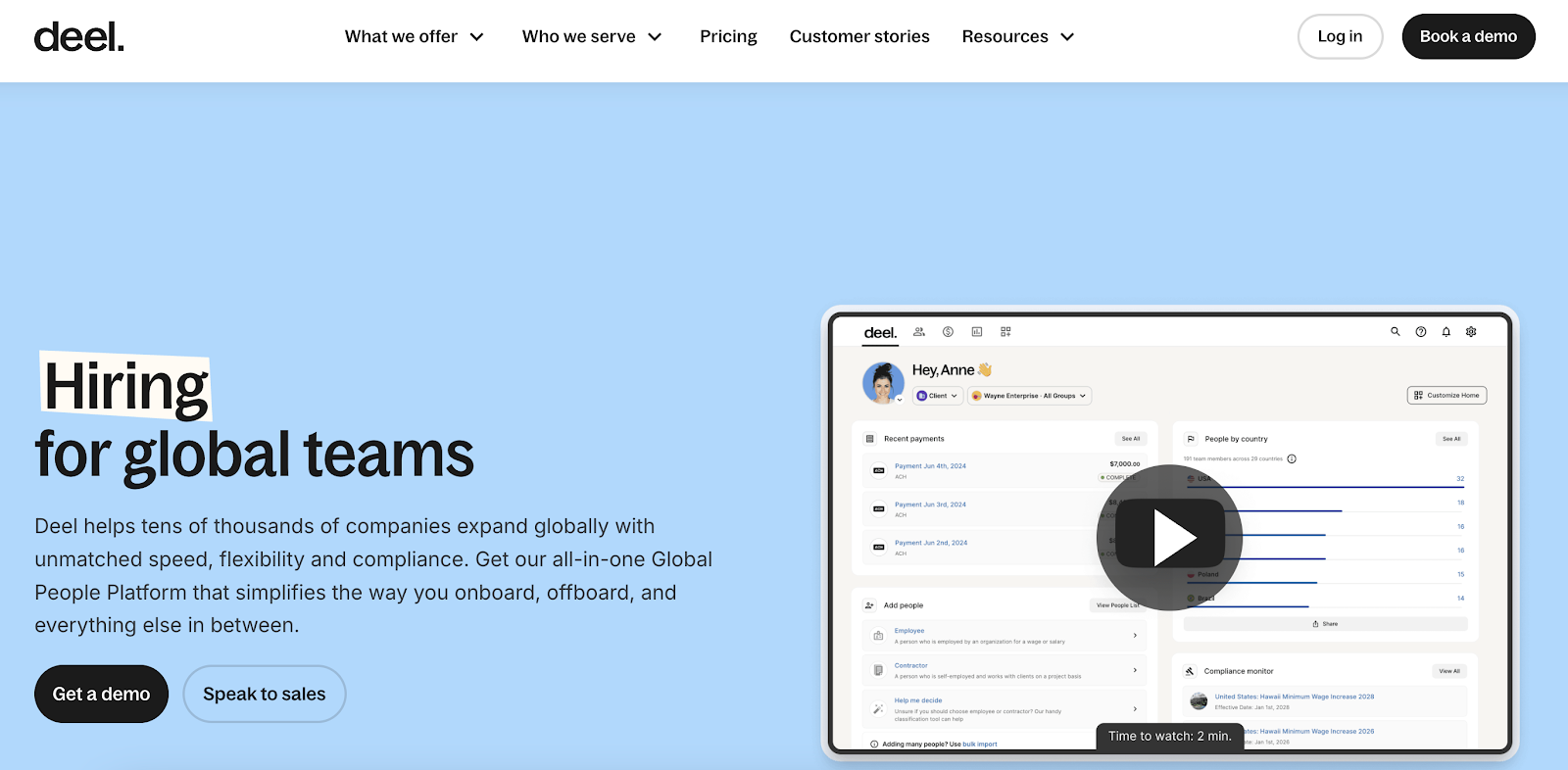
If you manage a global workforce, visibility becomes a real challenge. Deel helps you see how your team is structured across borders, contracts, and time zones.
Deel isn’t a traditional relationship mapping tool, but it does give you a centralized view of team relationships. You can track employees, contractors, reporting lines, and compensation. It’s a useful piece of the puzzle if you're doing account planning or navigating complex internal structures.
It also ties into customer relationship management indirectly. By understanding who your team is, where they sit, and how they relate to others, you can better coordinate communication with existing clients and prospects across regions.
Key Features
- Organization-wide team visualization
- Payroll, paid time off (PTO), benefits, and compliance tools
- Self-serve dashboards for managers and workers
- Secure infrastructure for international hiring
Pros
Deel offers visibility into distributed teams. Its clean interface and compliance automation help you move faster and reduce admin friction.
Cons
It’s one of the more expensive tools on this list, especially for smaller companies. It lacks external relationship mapping and has limited integrations compared to other platforms.
Pricing
- Deel Engage: $20/worker per month
- Employer of record: $599/employee per month
- Contractor management: $49/contractor per month
- Contractor of record: From $325/contractor per month
4. Peoplebox—Internal Relationship Tracking for Performance and Alignment
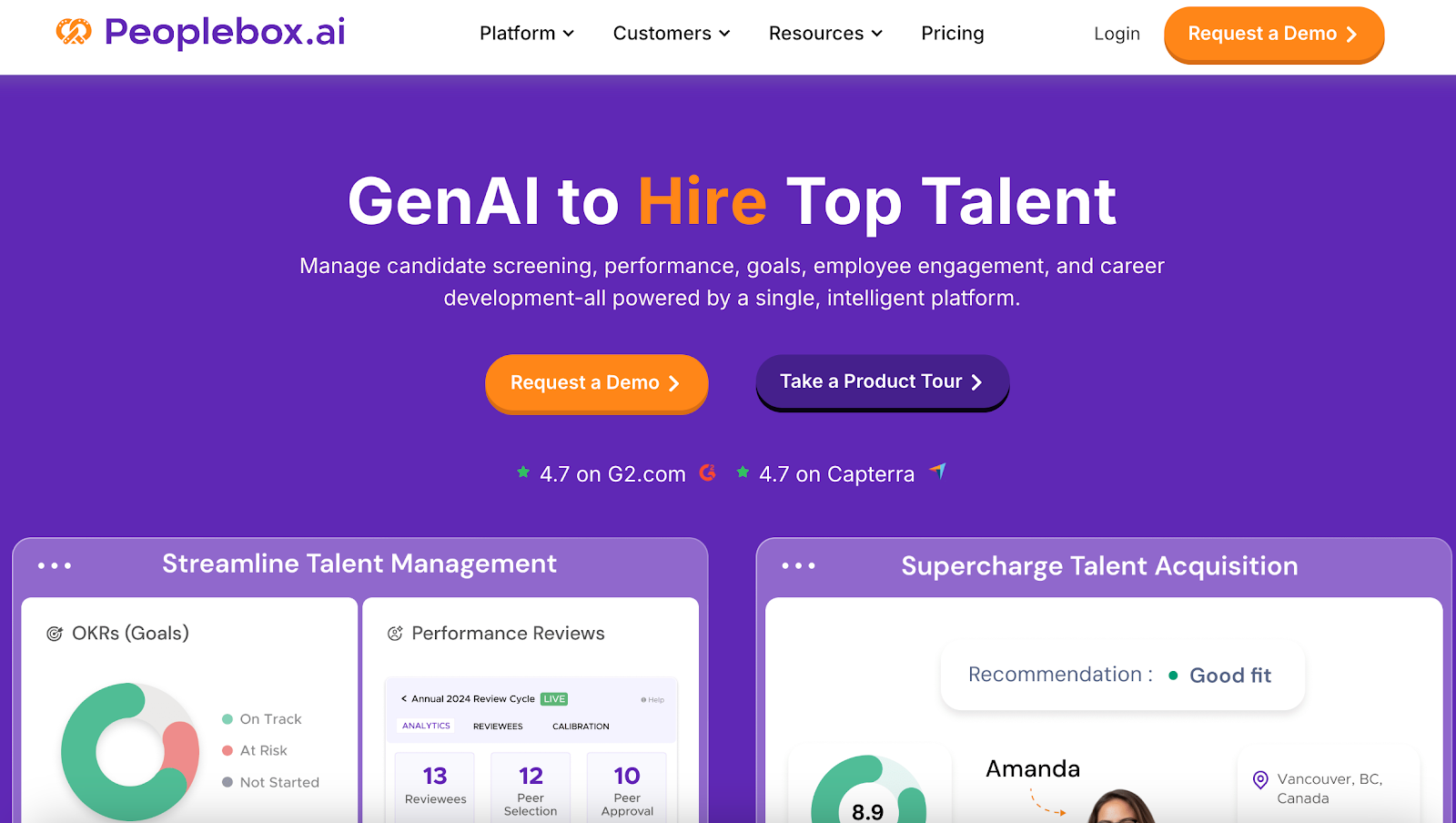
Peoplebox is built for internal visibility. If you’re trying to understand how your team sets goals, gives feedback, and tracks performance, this platform keeps everything in one place.
Unlike external-facing tools, Peoplebox focuses on building relationships inside your company. You can run performance reviews, objectives and key results (OKRs), one-on-ones, and engagement surveys within Slack or Teams. This makes it easy to stay connected without switching tools.
The platform helps account managers, people leaders, and executives get a clear understanding of how aligned their teams are. You can track progress against goals, identify where people are stuck, and make sure feedback loops happen.
Key Features
- Goal-based 360° reviews and key performance indicator (KPI) dashboards
- Advanced rating logic and feedback templates
- Slack/Teams-native workflows for reviews and surveys
- Custom forms for different teams and roles
Pros
Peoplebox is suitable for internal performance management. Its Slack and Teams integrations make it easy to adopt without extra training or tools.
Cons
It only offers annual billing, which may not work for everyone. The interface can feel clunky when managing more complex workflows like talent assessments or prioritizing action steps.
Pricing (annual only)
- Talent Management: $7/month/person
- OKR Platform: $8/month/person
- Full Suite Pro: $12/month/person
- Full Suite Premium: $15/month/person
- Enterprise: Custom pricing
5. SmartDraw—Structured Diagrams and Enterprise-Friendly Mapping
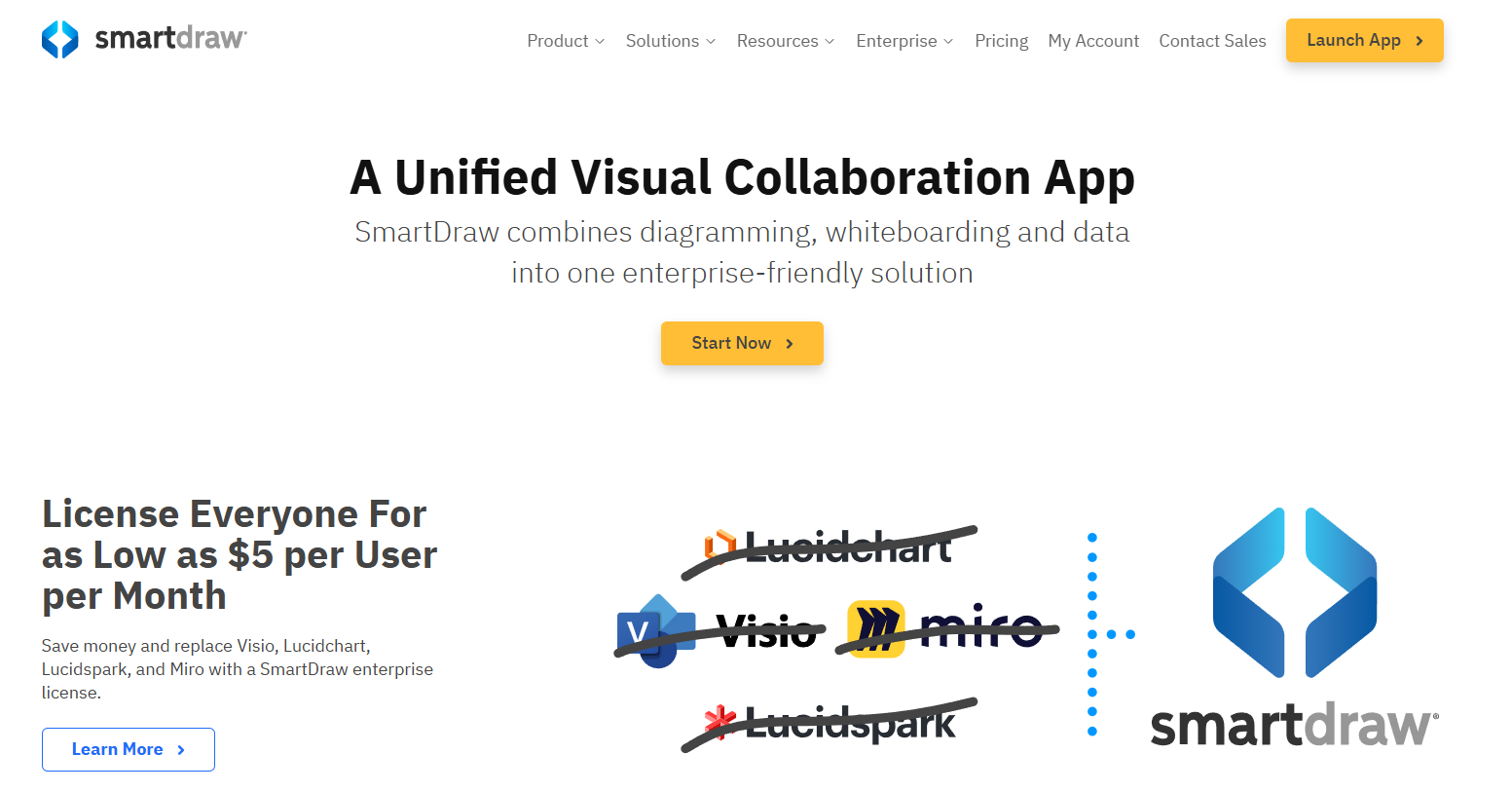
SmartDraw is for teams that need structure, not just flexibility. It’s a diagramming tool that helps you map out complex orgs, processes, and systems with precision.
You won’t find AI scoring or warm intro features here, but if you need to visualize multiple relationships across departments, SmartDraw gives you control. Think of it as a go-to for building detailed visual representations of teams, systems, or workflows.
It’s useful in enterprise environments where security, file control, and integrations with Microsoft 365 or Google Drive matter. You can keep your client relationships mapped within secure storage and align internal diagrams with IT standards.
Key Features
- Professional-quality diagram templates for org charts, workflows, and processes
- Integration with OneDrive, SharePoint, and Google Drive
- Ability to visualize cloud environments (like AWS and Azure)
- Admin tools for provisioning, single sign-on (SSO), and permission controls
Pros
SmartDraw is dependable for large-scale diagramming. It supports advanced IT needs and fits neatly into enterprise workflows, especially for technical documentation and org mapping.
Cons
It only bills annually, which can be limiting for teams wanting to try before committing. It’s not as user-friendly for casual collaboration or brainstorming, and diagrams often need manual tweaking to correct automation quirks.
Pricing (annual only)
- Individual: $9.95/month
- Team: $8.25/user/month (three-user minimum)
- Enterprise: Starts at $5/user/month
Features to Look for in Business Relationship Mapping Software
Every platform has strengths, but not all of them are built to drive outcomes. If you're searching for a tool that helps your team work smarter, focus on these features:
Relationship Data You Can Act On
The goal isn’t just to visualize your network. You need a tool that shows relationship strength, shared history, and interaction quality. This helps you move with intention and identify key decision-makers faster.
If a platform doesn’t surface insights or help you find real paths to connection, it may slow your team down.
Clear and Useful Visuals
A useful map should create a clear understanding of who matters and where the gaps are. Whether you're managing key accounts or reaching a buying committee, the visuals should clarify relationships and connection paths.
Look for tools that allow you to switch views by trust level, team involvement, or account structure.
Built-In Execution Tools
Mapping relationships is only part of the job. Your team also needs features that support follow-through. This includes intro request flows, CRM syncs, and task tracking.
Teams across sales, revenue, or account management benefit from tools that support next steps, not just static diagrams.
Integration With Your Existing Workflow
Effective software fits into your existing systems. Choose a relationship mapping tool that connects with the platforms your team already uses, like your calendar, CRM, or communication stack.
A disconnected tool often ends up ignored, no matter how impressive the visuals are.
Support for Strategic Outcomes
Relationship mapping is more than contact management. You need a solution that helps with account planning, customer retention, and keeping existing clients engaged.
If the tool aligns with your company’s goals and helps you make more informed decisions, it’s worth investing in.
Activate Trusted Connections With Village
When strong networks drive growth, Village helps your team put them to work.
It highlights key stakeholders, maps connection strength, and uncovers trusted paths to potential clients, key players, and target accounts. You see who’s connected, how well, and where to start.
Village gives your team the insight to move quickly and follow up with confidence. Whether you're re-engaging existing customers or reaching out to new clients, it helps you focus on what’s most likely to convert.
You can support key account managers, build on trusted networks, and protect existing clients by acting before competitors do. This helps your team identify gaps, address issues early, and keep your pipeline moving.
The benefits of relationship mapping become clear when you see different relationship types, trust levels, and access points in one place. That clarity leads to faster business decisions and opens new paths to more revenue, starting with just one relationship.
Schedule a demo and explore how Village helps you reach the right people faster.
FAQs About Business Relationship Mapping
What is relationship mapping in business?
Relationship mapping is a way to visualize and track connections between individuals and organizations. It helps you see who influences decisions, how people are connected, and where to focus next. Teams use it to build strong relationships and develop more effective outreach strategies.
This process is especially useful for business leaders, sales teams, and account managers who want to move beyond surface-level interactions and invest in connections that lead to more business.
What are the three steps to relationship mapping?
Most teams follow a simple framework:
- Collect data from CRMs, past interactions, and warm intros
- Visualize connections using a platform that handles complex relationships
- Use the map to guide outreach, prioritize paths, and shape informed strategies
The goal is to replace cold outreach with context-driven actions. A good relationship map becomes a strategic exercise, not just a visual.
What is a mapping relationship?
A mapping relationship is any defined connection between people or accounts you track for business reasons. This could include referrals, shared history, or alignment on roles or goals.
Mapping these relationships helps sales reps and go-to-market teams understand influence, proximity to decision-makers, and how to move through the sales process more effectively.
How to create relationship mapping?
Start by identifying your key contacts and gathering relevant information like past emails, meeting notes, or intro paths. Then use software with robust features to visualize the data and add layers like trust level, shared context, and communication history.
To get the most out of it, go beyond direct connections. Include other contacts who influence outcomes and help you build meaningful relationships with the people who matter most to your business.

